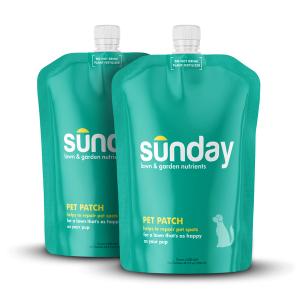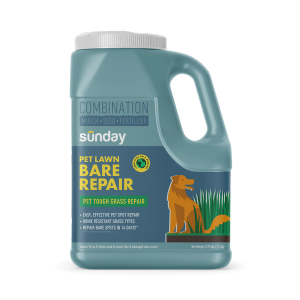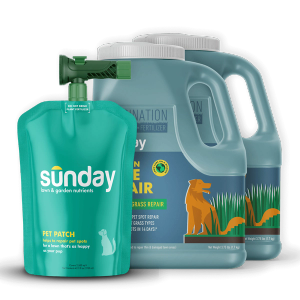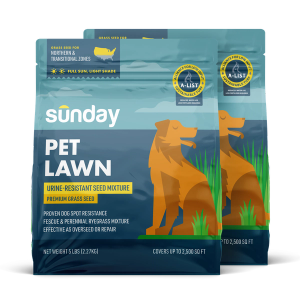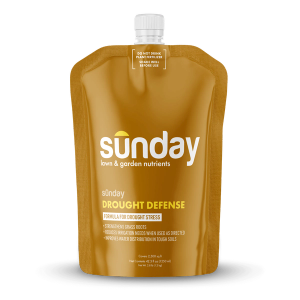What is the soil food web?
The soil food web is the living part of the soil made up of a network of insects, animals, earthworms, and microscopic creatures like fungi and bacteria interacting with the plants and animals nearby. When these organisms and plants in and above the soil work together, they create a healthy balanced ecosystem that helps your yard thrive. A healthy, functioning soil food web can improve the physical, chemical, and biological properties of soil including texture, structure, and microbial activity.
Why is the soil food web important?
A healthy soil food web creates a self-sufficient soil that isn’t reliant on fertilizers and pesticides—and one that can support a biodiverse, and thus a more resilient system. When your soil thrives, so do your plants! So what exactly does the soil food web do? It...
...nourishes plants with nutrients
The soil food web helps with nutrient cycling. Soil particles and soil organic matter contain nutrients that plants need to survive. Plants can't always absorb these nutrients without a little help from microorganisms. Microorganisms in the soil help break down nutrients and make them available for plants. In return, plants release sugars and other carbs to feed the soil organisms.
...improves soil physical properties
Soil organisms also improve soil structure so that plants can grow deeper roots and be able to get more water and nutrients. By improving physical properties like structure, a balanced soil food web can also prevent compaction and erosion by wind and water.
...maintains a healthy ecosystem
A healthy soil food web is resilient to stress and change. Healthy soil supports a rich and diverse soil community, capable of defending itself against pests and diseases without the use of pesticides. And since pesticide use is a major cause in the decline of insect populations, this also helps prevent ecosystem collapse.
...provides plant protection
A functioning soil food web gives your plants the protection they need to grow successfully. Some soil critters produce hormones that help plants break down pollutants while others outcompete pests for food. These uniquely important roles provide a natural defense against pests, diseases, drought, flooding, and weeds.
How it works: the trophic level breakdown
There are certain roles that each group of organisms plays within the soil food web. Roles are broken down into different categories called trophic levels. Trophic levels show an organism's function and relationship to others within the soil food web.
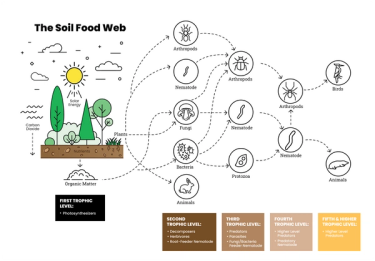
Photosynthesizers
Photosynthesizing plants take in the sun’s energy and fix carbon dioxide. These plants also contribute to the organic matter in the soil. Plant roots are rich in different “foods” like carbon compounds, sugars, and amino acids that feed soil microorganisms. These unique combinations then determine the microbial community that can exist in the soil around them.
Intermediate micro and macro organisms
You might think of this group as garden pests, but these decomposers, herbivores, and root-feeder nematodes are an essential part of healthy soil. Decomposers like fungi break up organic matter and release nutrients. They also improve soil structure through their fungal “branches” called hyphae. Herbivores and root-feeder nematodes release important molecules like nitrogen and improve structure through burrowing.
Predators
To keep the fungi and nematodes in check, this group of predators, parasites, and fungi/bacteria-feeder nematodes eats second trophic level organisms. Critters like millipedes, springtails, mites, fly larvae, and beetles break down organic matter and are also food for other beneficial arthropods like centipedes, spiders, and ants. They help build soil structure by forming channels and soil clumps called aggregates to create pore space in the soil for air and water to pass through and be stored in.
Higher-level predators
As we expand our view of the soil food web, we get to the higher-level predators that feed on smaller soil organisms in the web. These can include predatory nematodes, small mammals like mice and rabbits, or the birds and other predators that prey on them. They also help release nutrients in plant-available forms and create bigger channels in the soil.
How to improve your soil food web
At Sunday, we’re all about building a healthy base to limit the need for any additional inputs. Even the most disturbed soils can be brought back to life with a restoration of the soil food web. Follow these steps to boost your soil health:
- Identify problems such as nutrient deficiencies with soil testing.
- Reduce bare spots and increase biodiversity. Seed in clover or diverse grass blends, add native groundcover, or add mulch where plants won’t grow.
- Encourage microbial activity and build organic matter through compost and topdressing.
- Avoid physical issues through mindful landscaping and maintenance—minimize handling/disturbance of the soil and limit compaction from traffic.
- Get growing. Growing grass and other plants will support a healthy food web by building organic matter and encouraging microbial biodiversity. Grow deeper roots with proper watering and mowing practices.
Cited sources
Soil biology. University of Minnesota Extension.
Soil food web. USDA NRCS.
Soils and soil physical properties. UC Santa Cruz.
The soil food web. Ohio State University.







